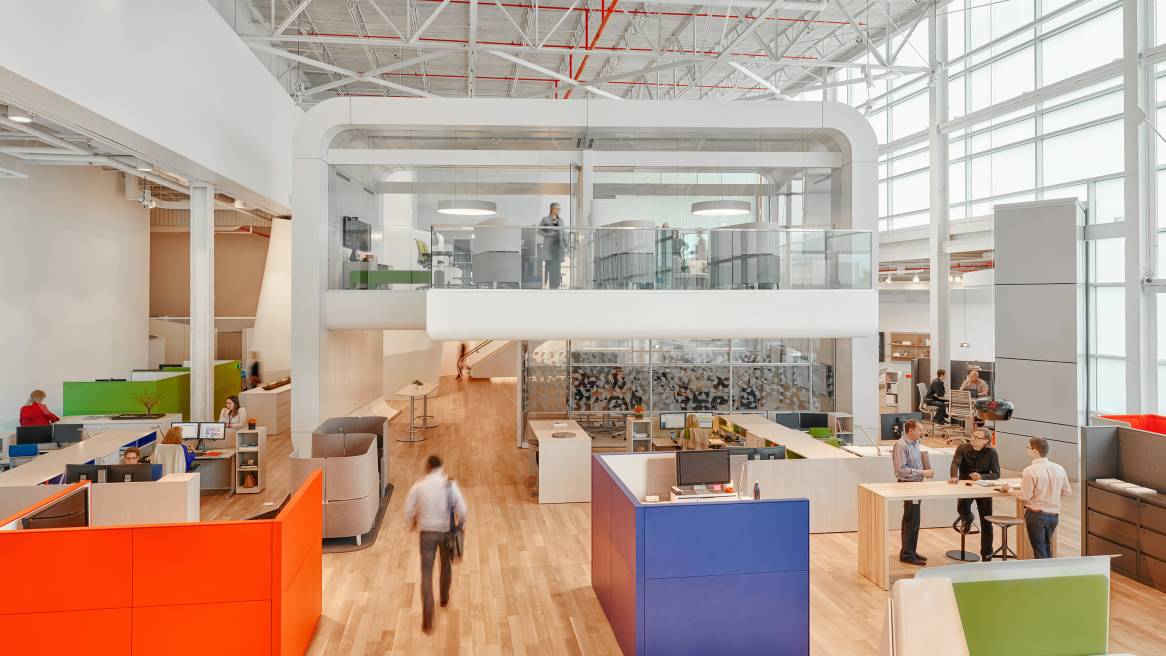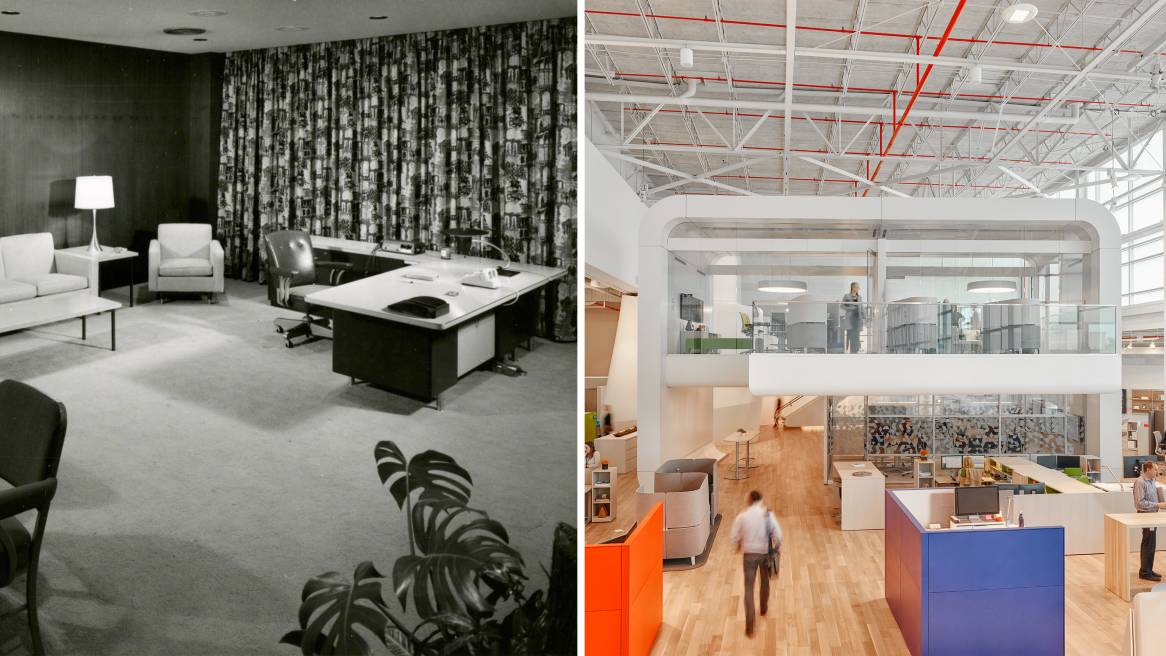An Evolution of Leadership Spaces
To illustrate the ways in which business and its leaders have evolved over time, Steelcase dug through its archives to unearth photos dating back to 1915.
Since someone first hung a sign outside of their door, leaders have been inside shaping how work gets done. As the business climate changed over time, so did the ways leaders needed to lead their organizations. Today, traditional hierarchy-based management practices that may have guaranteed success in the past, may no longer work and that in turn, requires a different approach to the workplace.
From the Industrial Revolution to today’s mobile and global economic climate, the place leaders go to get their work done looks very different. Steelcase has been at the forefront of this progression from the start. The roll-top executive desk was first designed with leaders in mind and focused on information security and efficiency. Today’s leader navigates a far more complex business landscape and must rethink how to lead and create a robust, agile organization. This requires a very different kind of leadership environment.
For decades, Steelcase has experimented on itself with new environments to support employees and leaders. This includes its experimentation with the WorkCafé, innovation center and workspaces addressing the need for privacy. Right now, it’s in the midst of evaluating a new space for its senior executive team. The Steelcase Global Design Team has created a next evolutionary step in leadership spaces — a radically different leadership environment designed to put leadership literally in the middle of and fully open to the organization. The idea is to use space as a tool to better support the individual, create connections and improve performance.
To illustrate how much business and its leaders have progressed over time, Steelcase dug through its archives to unearth photos from decades past.
1915-1940: The Executive Desk
Business has always been personal. But, when an entire business encompases the owner, a bookkeeper and a few factory workers, as was the case for many new companies in the Industrial Era, the personality of the leader became the leadership style for the company.
As organizations grew, so did the front office. Businesses transitioned from a craft economy to a capital economy, and we began to see new philosophies around organizational structure and leadership. Scientific management, also known as Taylorism, blossomed during the the 1910s championing time motion efficiency.
Leaders’ desks which symbolized success and status also allowed for a more efficient workflow. As organizations grew, they began to specialize, and in the 1920s and ‘30s, we observed a shift to creative work. Businesses were no longer just making things faster and cheaper. They were developing new things and the next big idea. Desks had to support this new creative process.
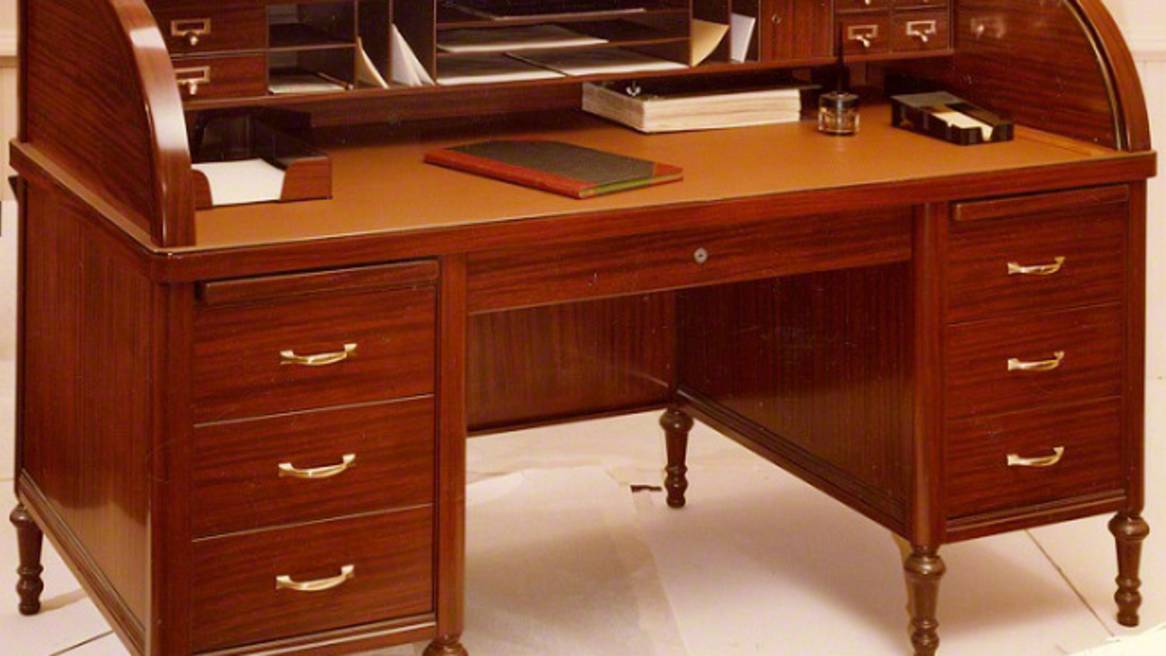
1950-1989: Efficiency to Effectiveness
In the 1950s, the executive’s space clearly denoted status. Most leaders operated within a hierarchical system. The amount of filing space, number of seats at a conference table and window views were just a few of the things that helped communicate the owner’s prestige.
Peter Drucker, considered by many the founder of modern management, coined the term “knowledge worker” in 1959. During the coming decades, Drucker’s philosophies spoke to leaders in an increasingly complex world. He identified a move from efficiency to effectiveness. It became important not just to solve the problem right, for example by building a better mousetrap. But, it was critical to solve the right problem. It didn’t matter if you built the best buggy whip, for example, if Henry Ford made buggies obsolete. This put leaders on a path to foster creativity.
Toward the end of this era, it became clear that the ways people were working were evolving. Work was no longer done primarily alone at someone’s desk. In order to be creative and innovative, employees had to work cross functionally, on multidisciplinary teams. They began to move around more to be with the people required to get the job done. While direction for-the-most-part still came from the top, by the 1970s and 1980s you would find engineering, marketing and finance, for example, all working together to solve big problems.
Leaders looked for ways to increase the speed of organizational change. The top-down structure so many businesses were accustomed to just didn’t allow companies to change direction fast enough. Over time, the value and importance of the culture of an organization began to rise. If companies had the right culture, they had a better chance of being agile. The leadership environment adjusted as well adding more shared, collaboration spaces.
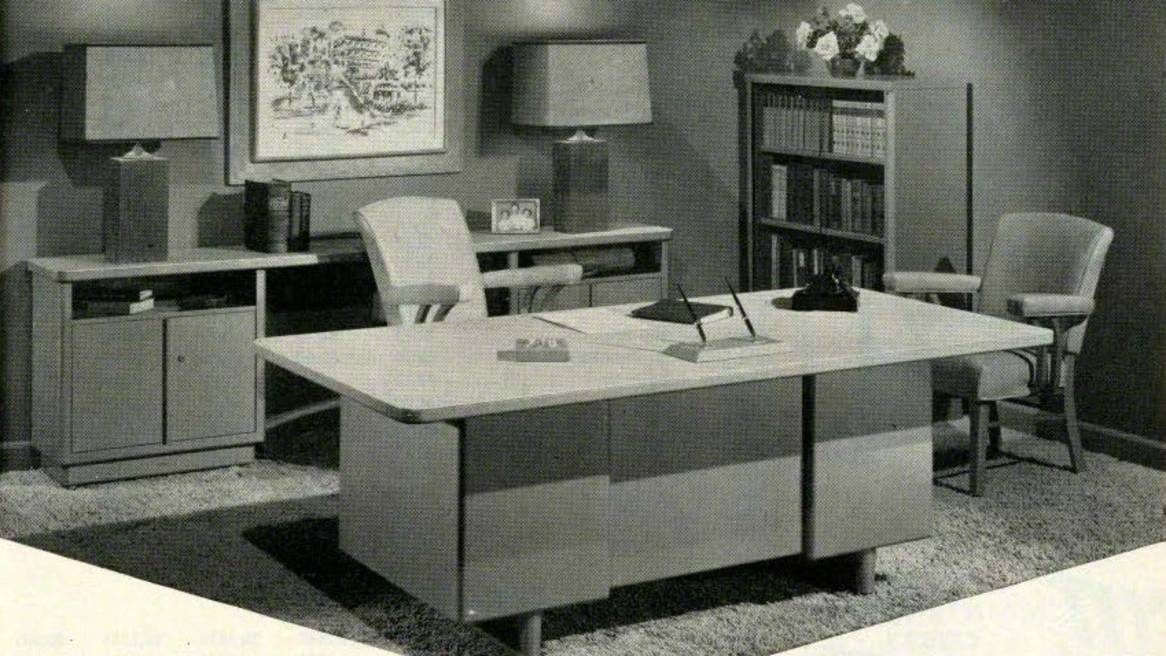
1990-2010: Embracing Networks
In the 1990s, the flow of information accelerated and the speed of business sped up as well. Organizations began to see themselves in terms of social networks and cultures, as much as structures. Relationships powered the generation of ideas within complex organizations. Social interactions and the space that supported them became more important.
Steelcase prototyped a new groundbreaking approach for creating leadership spaces in the mid-1990s. In the new Leadership Community, leaders moved out of private offices and away from leadership silos. Space changed from owned offices and conference rooms assigned by status and rank to a variety of shared spaces designed to strengthen networks.
The Leadership Community evolved to encompass everything between the walls of the leadership floor, not just leaders’ primary work environments. The purpose was to strengthen social capital as people would see each other more informally over the course of the day.
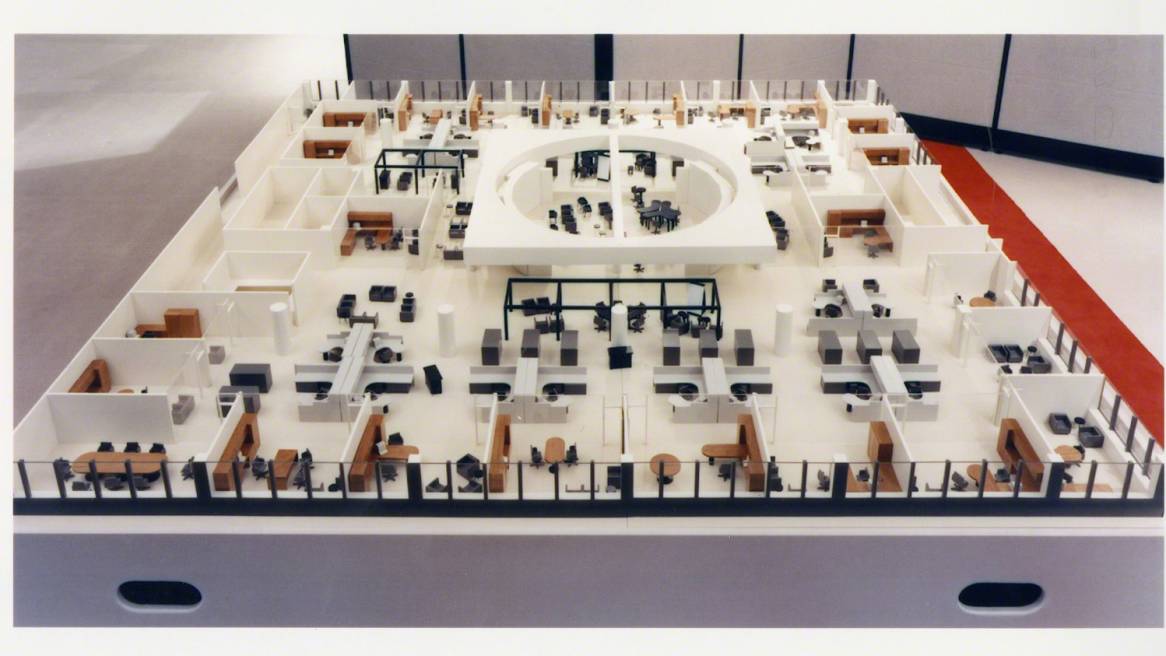
Now: A New Leadership Prototype
In 2016, Steelcase researchers and designers began working on the next evolution of leadership spaces. The new leadership environment is an iconic symbol of the cultural change happening in leadership. The new home celebrates openness and interconnectedness across the entire organization.
Steelcase is in the early stages of testing this prototype, a new community space on the first floor in the heart of Steelcase’s Grand Rapids, Mich. campus. Unlike the previous Leadership Community which was a destination, the new space is on the traffic path of the company, making senior leadership more accessible and more visible while still able to access private areas when needed.
Thresholds to and from the space are minimized. Leaders have placed themselves in the midst of the flow of ideas and people. The invitation to the rest of organization is clear. Anyone can work anywhere no matter what their title or status may be. The leadership prototype is no longer a destination. It’s a thoroughfare opening up and strengthening relationships.
